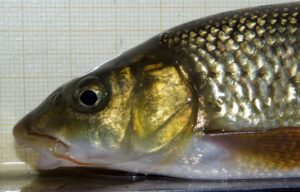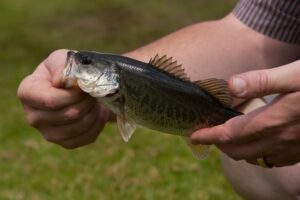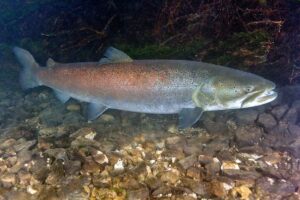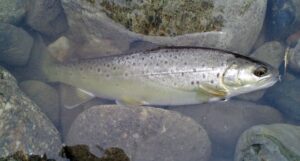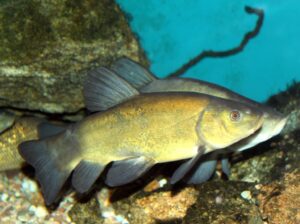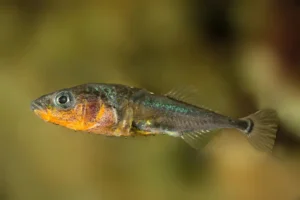Panfish: Big-scale Sand Smelt (Atherina boyeri)
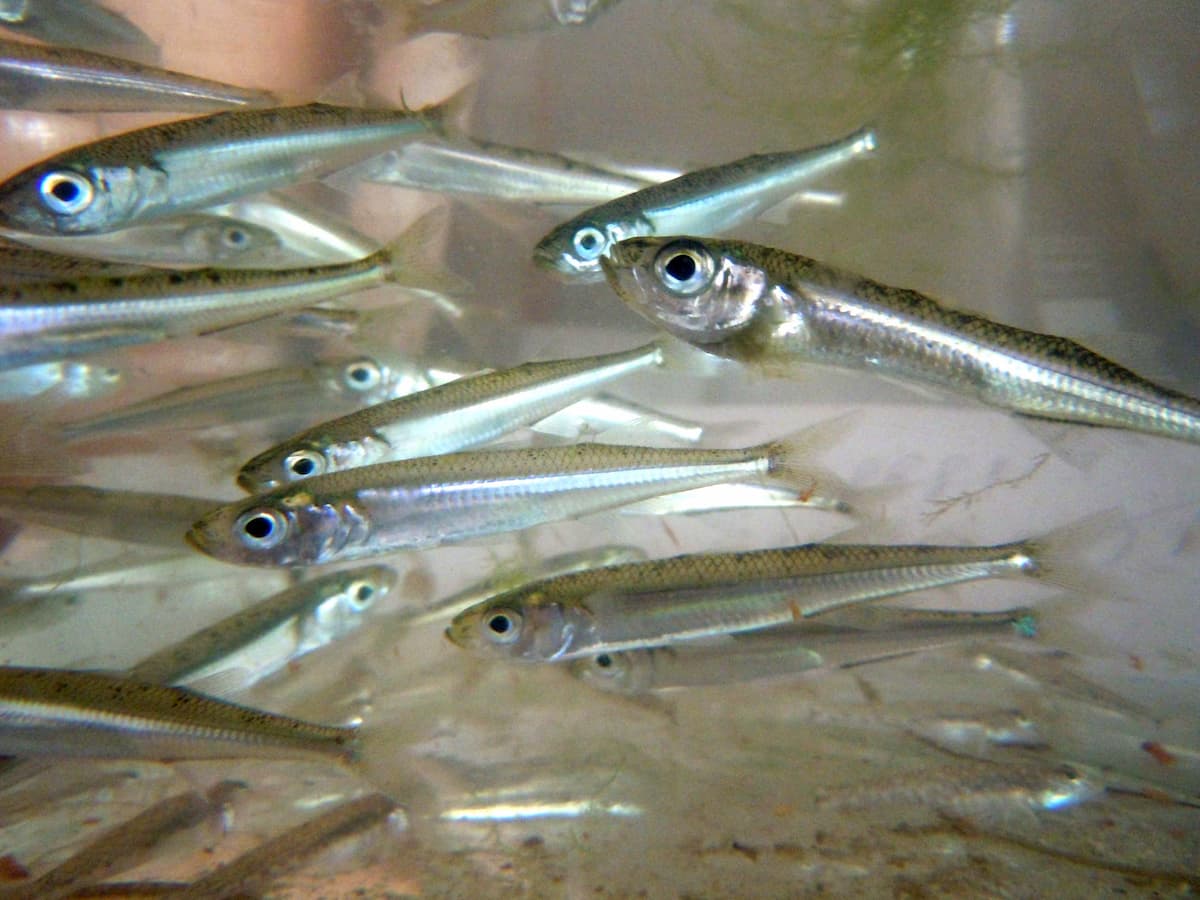
The Big-scale Sand Smelt, a small yet fascinating fish from the Atherinidae family, is renowned for its elegant silhouette and silvery sheen.
This fish, predominantly found in the fresh and brackish waters of the Mediterranean, the Black Sea, and the North-East Atlantic, is noted for its ability to adapt to various aquatic environments. With a streamlined body and a head featuring large eyes, the Big-scale Sand Smelt blends natural beauty with resilience, effortlessly navigating often rapidly moving waters.
Key takeaways
The Big-scale Sand Smelt is recognised by its long and slender body, brilliantly silver with a yellow-green to blue dorsal band. It features two distinct dorsal fins, and its abdominally-placed pelvic fins contribute to its elegant appearance.
This inhabitant of fresh and sometimes brackish waters prefers fast-flowing and well-oxygenated currents. It is widespread throughout the Mediterranean, the Black Sea, and up to the coasts of Atlantic Europe.
Big-scale Sand Smelts reproduce by spawning in areas of fast current, where they deposit up to 3000 eggs. Although the IUCN does not consider them endangered, understanding their life cycle and ecology is essential for maintaining a stable population.
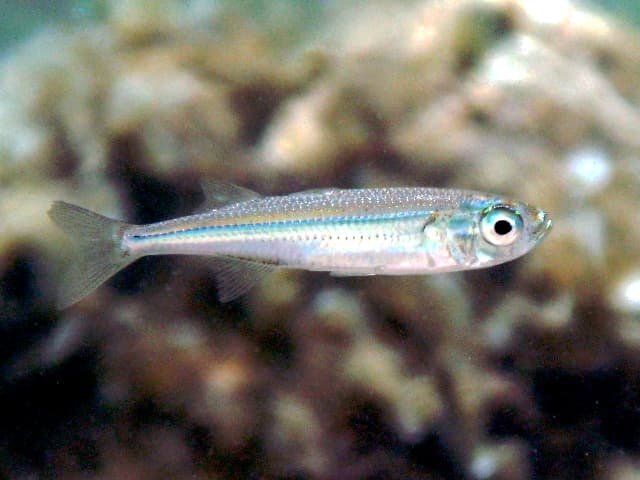
Physical Description of the Big-scale Sand Smelt (Atherina boyeri)
Body Description
The Big-scale Sand Smelt, also known as a sand smelt, is a small freshwater panfish from the Atherinidae family. It has an elongated and streamlined body typical of small fish.
Head Description
The head of the Big-scale Sand Smelt is characterised by a relatively short snout and relatively large eyes, the diameter of which is slightly more significant than the length of the snout.
Body Shape and Colour
The body of the Big-scale Sand Smelt (Atherina boyeri) is monochrome, primarily silver and grey. The back has a yellow-green to blue colouration dotted with black spots, while the belly is silver-grey. A horizontal yellow and blue line bisects the body, adding to its distinct beauty.
Fins Shape and Colour
The Big-scale Sand Smelt has two separate dorsal fins, and the pelvic fins are in an abdominal position. Its flanks are adorned with a dark silver band topped by a bright green or golden line, adding to its visual appeal.
Size, Weight, and Lifespan
Size and Weight
The Big-scale Sand Smelt typically measures about 18 cm (approximately 7 inches) and can reach a maximum size of 20 cm (approximately 7.9 inches). Given its small size, it is relatively light in weight.
Lifespan
The lifespan of the Big-scale Sand Smelt is about four years, which is typical for small fishes of its category.
Habitat and Distribution Natural Habitat
The Big-scale Sand Smelt (Atherina boyeri) is mainly found in the sea, but it also ventures into fresh waters and can be found in brackish waters.
Geographical Distribution
This fish is widespread and present in the Mediterranean, the Black Sea, and some areas of the North-East Atlantic. Indeed, the Big-scale Sand Smelt is very common in the Mediterranean and the Black Sea, and it is also present along the eastern Atlantic coasts, from Spain and Portugal to Mauritania and Madeira. It can also be found in certain coastal rivers and canals. Isolated and permanent populations have also been observed along the coasts of the North-East Atlantic, the English Channel, the Irish Sea, and the North Sea.
Feeding Habits of the Big-scale Sand Smelt (Atherina boyeri)
The Big-scale Sand Smelt primarily feeds on plankton, small crustaceans, and insect larvae. Its diet is typical of small fishes found in freshwater environments.
Reproduction Reproductive Process
The reproduction rate of the Big-scale Sand Smelt correlates with its size, with larger fish beginning to spawn earlier and finishing later than the smaller ones. Fecundity also varies with the size of the females, ranging from a few eggs for the smallest to over 3000 eggs for the largest. The eggs vary in diameter depending on geographical location, ranging between 0.03 and 2.00 mm.
Fishing Interest Interest for Fishermen
Due to its modest size, the Big-scale Sand Smelt is not highly prized by professional fishermen. However, it can be caught for recreational purposes, providing a pleasant fishing experience for enthusiasts.
Fishing Techniques
Due to its small size and schooling behaviour, Big-scale Sand Smelt fishing uses gillnets or fishing nets. In freshwater, anglers use light gear to catch the Big-scale Sand Smelt (Atherina boyeri). The Big-scale Sand Smelt is sometimes used as bait to catch other more prized species.
For fishing the Big-scale Sand Smelt, it is recommended to use a light and flexible fishing rod, about 2 to 3 meters (approximately 6.6 to 9.8 feet) long. A small reel with adequate line capacity is also necessary. As for bait, mud worms, insect larvae, and small crustaceans are popular choices to attract the Big-scale Sand Smelt. It is important to note that fishing for the Big-scale Sand Smelt requires patience and careful observation of the fish’s movements in the water.
International Names of the Big-scale Sand Smelt (Atherina boyeri)
The Big-scale Sand Smelt is known under various names worldwide. In French, it is often called “Athérine”. In Spanish, it is named “Pejerrey mediterráneo”. In Italian, it is referred to as “Latterino”. These diverse names reflect the geographical distribution of the Big-scale Sand Smelt and its presence in different cultures. These international names indicate the interest this fish generates in various contexts, whether in fishing, scientific research, or conservation.
Invasive Behavior and Threat to Other Species
The Big-scale Sand Smelt is not known for its invasive behaviour or as a threat to other species. As a small freshwater fish, it occupies a specific ecological niche and generally does not disrupt the balance of the ecosystems where it resides.
Conservation Status on the IUCN Red List
The IUCN Red List states that the Big-scale Sand Smelt (Atherina boyeri) is not endangered. Its population is stable, and it is widespread in its natural habitat.

